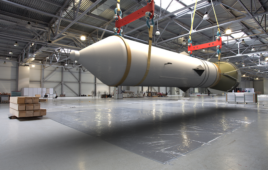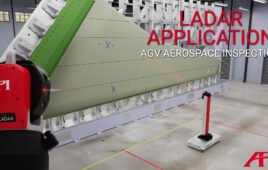The flight test portion of the Defense Advanced Research Project Agency’s (DARPA) Persistent Close Air Support (PCAS) program has been completed by Raytheon, the company announced in a press release.
The PCAS program includes a number of technologies which allow weapons systems data and other information pertaining to situational awareness to be shared between ground troops, Joint Terminal Attack Controllers (JTACs), and combat aircrew more quickly. It took four-and-a-half years to complete all three phases of the program. Flight testing was conducted in the first half of 2015.
“The PCAS program was able to reduce close air support response times from nearly one hour to less than six minutes,” said Tom Bussing, Raytheon’s VP of Advanced Missile Systems. “By speeding critical information to decision makers, PCAS could save lives in the battlespace.”
In March, the U.S. Marine Corps conducted an exercise which allowed the program to demonstrate the launch of a Griffin missile from an altered MV-22 Osprey tiltrotor aircraft. Later in the spring, the program was showcased when an A-10C Thunderbolt II attack aircraft and a joint terminal attack controller (JTAC) on the ground sprung a number of GPS- and laser-guided weapons in a series of trial flights. Both the A-10C and the JTAC took advantage of the program’s real-time digital communications and situational awareness abilities.
The system was developed so that it can operate equally well across a number of platforms, digital radios, sensors, and weapons. It is also transferrable between platforms. The two main components of the PCAS system are PCAS-Air, which entails smart launcher technology and a pilot table, and PCAS-Ground, which features the equipment used by the JTACs.
Raytheon, who has been the integrator for the PCAS, has been joined on the program by BAE Systems, Northrop Grumman, General Electric, Rockwell Collins, and 5-D Systems.
Now that the program has been finished, DARPA will attempt to assimilate the PCAS technology to a variety of military platforms aside from the A-10C and MV-22.
Filed Under: Aerospace + defense




